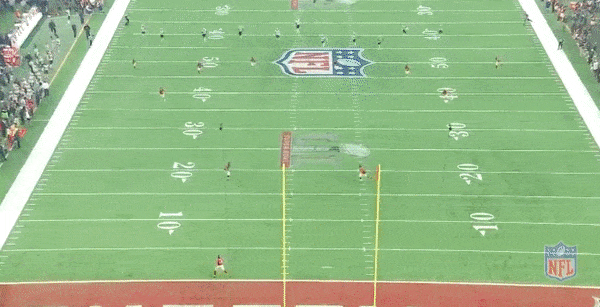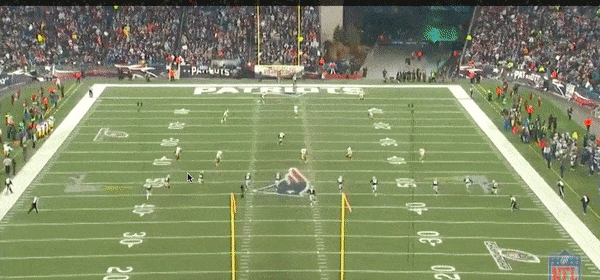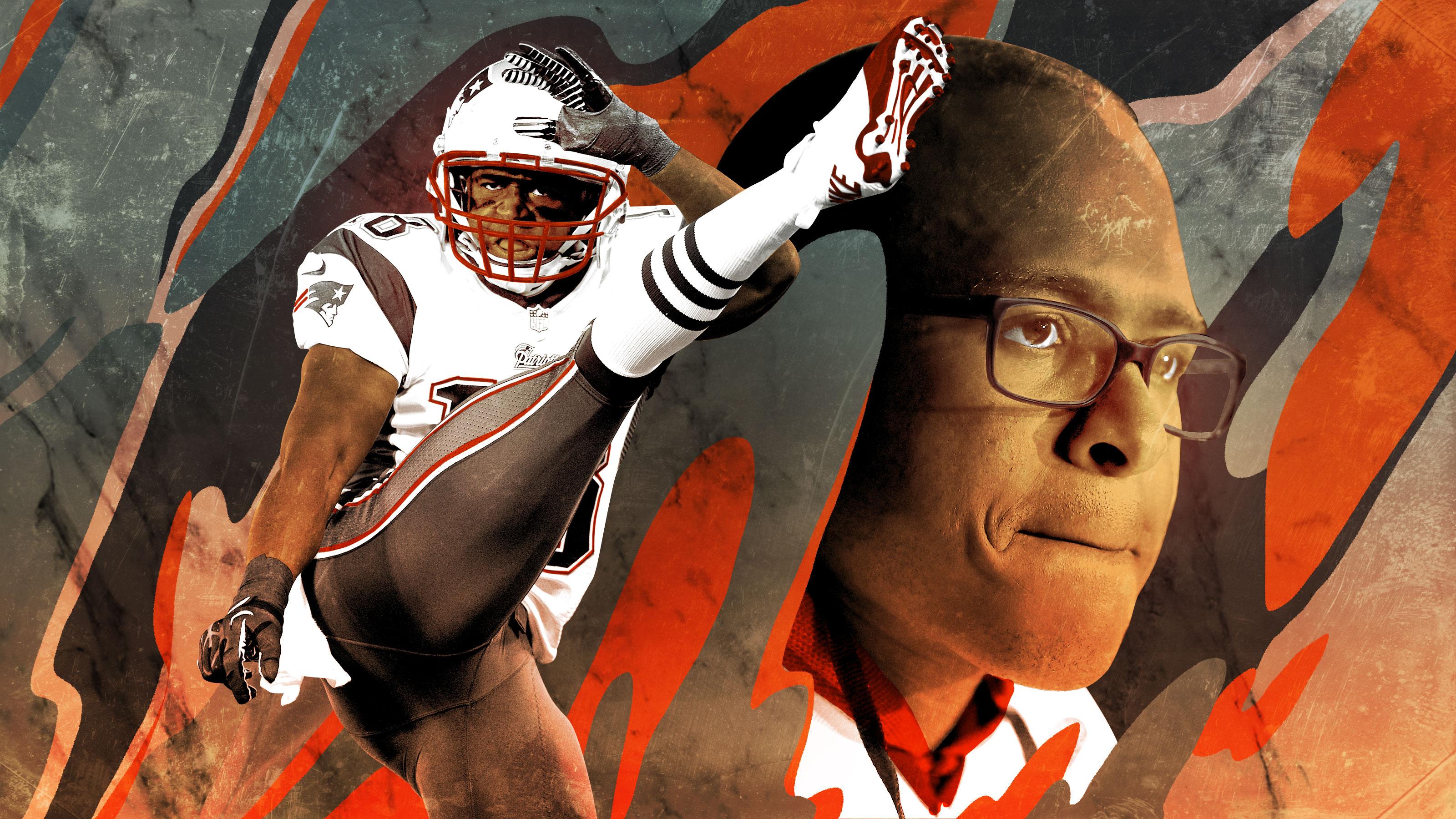The Mysterious Career of Matthew Slater, Special Teams Superstar
Slater heads into Super Bowl LIII with a reputation as a coin-toss hero and the Forrest Gump of the late-era Patriots dynasty. From an on-field standpoint, though, what makes Bill Belichick’s most trusted specialist worthy of heapings upon heapings of praise?He has the résumé of a Hall of Famer and the star power of a guy cut in Episode 2 of Hard Knocks. Matthew Slater has been named to the Pro Bowl seven times—as many times as Aaron Rodgers and Adrian Peterson, and more times than Troy Aikman and Randy Moss. He has been recognized as a Pro Football Writers’ first-team All-Pro four times—once more than his GOAT teammate, Tom Brady. And yet he is relatively anonymous: He doesn’t put up massive stats, he rarely makes highlight-reel plays, and I’ve never seen anybody wearing his jersey. Slater is to the great moments of the late-era Patriots dynasty what Forrest Gump was to the pivotal events of the 1960s: Look closely at every pregame captain’s meeting, confetti-causing kneeldown, and triumphant trophy lift—you’ll find him.
Slater has become a near-mythical figure in New England football lore. He embodies the Patriot Way by keeping quiet, doing his job, and putting the team’s needs in front of his own. He’s credited as the heart of the dynasty, a leader both on and off the field, and an inspiration to new players who need to learn how to fit in with the most successful franchise in modern sports history. He’s become famous for apparently not wanting to be famous.
Most recently Slater has been lauded for winning critical coin tosses, as he correctly called the flip at the start of overtime in this month’s AFC title game. The Patriots got the ball in Kansas City and proceeded to march 75 yards for the decisive touchdown. This was reminiscent of Super Bowl LI, when Slater also won the coin toss in overtime to help New England secure a 34-28 victory over the Falcons. His secret on these tosses: always calling heads. When you’re with the Patriots, “always calling heads” can be lauded as a work of staggering genius.
Slater is a Patriots icon, known among fans for his coin-flip heroics, his pep talks, and his philanthropy. But I have never seen an explanation of what makes him worthy of being the most decorated special teamer in the NFL. So what, exactly, does Slater do? And more importantly: Is he good at it?
Slater is listed on New England’s roster as a wide receiver, but that’s just a technicality. In 11 NFL seasons, Slater has made just one career reception, a 46-yarder in the Patriots’ 2011 season opener against the Dolphins. (“When Slater comes in the game, you better get back there deep,” said then-ESPN broadcaster Jon Gruden, a completely inaccurate piece of advice on how to defend a player who’d never caught a pass in the pros and hasn’t caught one since.) I suspect that Slater is the only wide receiver in league history with as many career catches in the Pro Bowl as in the regular season.
According to Pro Football Focus, Slater hasn’t even run a route on a pass play since 2016. He played 19 offensive snaps during the 2018 regular season, and from the best that I can tell, 17 of them came because Slater has an honorary spot in the team victory formation. (To summarize: Suspended wide receiver Josh Gordon took three defensive snaps for the Patriots this season, while Slater played two snaps on offense that weren’t in the victory formation.) Slater has never tallied more than 100 offensive snaps in any of his 11 years with the Patriots, but did play 109 snaps at safety in 2011, when New England suffered a rash of injuries on defense.
Slater’s specialty has always been special teams. Part of that was to be expected: When he attended UCLA, Slater played wide receiver and safety, but wasn’t especially good at either. He finished his college career with zero receptions and just a few snaps on defense. But he took over as the Bruins’ kickoff returner as a senior and brought three kicks back for touchdowns, earning All-American honors as a return man. After clocking a 4.4-second 40-yard dash leading up to the 2008 draft, Slater (who happens to be the son of Rams legend Jackie Slater) appeared to have a future as a return specialist, and the Pats took him in the fifth round. But when New England deployed Slater as a return man during his first two seasons, it didn’t pan out. He never returned a kick for longer than 35 yards, and never proved significantly better at returning kicks than guys like running back Laurence Maroney and cornerback Ellis Hobbs, who also had meaningful roles on offense and defense, respectively. And so, Slater discovered his calling: embracing a role on special teams not as a featured player, but as a cog in the machine. He took to blocking on return units and serving as the gunner on punt coverage units—the player who lines up on the outside of the punt formation and sprints downfield to be the first to stop a potential return.
Here’s a play from 2013 in which Slater shows how brilliant he can be as a gunner. Two Ravens were assigned to prevent him from getting downfield. Slater burned both, sprinting to tackle Baltimore return man Jacoby Jones at the 10-yard line. The punt traveled 59 yards, and Slater somehow went 57 yards in time to take down Jones for a return of a mere 2 yards.
Here’s a Slater play from Super Bowl LI that I love. Falcons return man Eric Weems had plenty of blockers ahead of him and to his left, but Slater came bursting downfield like a man possessed, beating everybody who could have potentially gotten in his way. He met Weems at the 15-yard line, forcing him to cut back to his right where there were no blockers. This play was probably graded as a missed tackle, but special teams is a group effort. Slater didn’t get the stat, but single-handedly disrupted the return.

Slater is far from the first person to be celebrated for his contributions as a special teamer—the NFL has given special teamers spots in the Pro Bowl for more than 40 years. But even compared to other special teams standouts, Slater’s career stands apart. Special teams roles have long been reserved for backups and late-round picks considering their relatively low learning curves—run fast, hit hard—and relatively high risks of injury. On most franchises, special teams units are filled with young players hoping to prove valuable enough to retain a spot on the roster—and to hang around long enough to eventually earn reps at their primary position, like wide receiver or defensive back. The 2017 league leader in special teams tackles was Chargers linebacker Nick Dzubnar, who went undrafted out of Cal Poly in 2015, stood little chance of climbing the defensive depth chart, and set about staking his claim on special teams. Sometimes this path can work: Take Adalius Thomas, a 2000 sixth-round pick who made the Pro Bowl as a special teamer in 2003 and later made the Pro Bowl as a linebacker in ’06. (This inspired the Patriots to give him the one truly bad contract they’ve handed out during their dynasty era.) In 2017, Cardinals rookie Budda Baker was named the NFC’s Pro Bowl special teams selection opposite Slater; this season, Baker emerged as a starter for Arizona at safety.
And when players do become famous for special teams prowess—or as famous as they can become on special teams, at least—they still generally help out in other ways. This season’s pair of Pro Bowl special teamers, the Chargers’ Adrian Phillips and the Rams’ Cory Littleton, were both regular starters for their respective defenses. The most famous special teamer of all time is probably the Giants’ David Tyree, who saw enough action at wide receiver to make one of the greatest catches in football history, against the Patriots in Super Bowl XLII. Justin Bethel, who made three Pro Bowls on special teams with the Cardinals, has also seen plenty of time at cornerback, returning interceptions for touchdowns in 2015, 2016, and 2017.
None of this is true of Slater. He’s not a young guy; he’s 33. And he’s not hoping to transition from special teams into a more traditional role; in fact, he has gradually been weaned off any non–special teams duties over the course of his decadelong career. He’s not even the only veteran special teamer on the Patriots: 30-year-old Nate Ebner is also a safety in name, but a special teamer in reality. Ebner, who played rugby in the 2016 Olympics and then led the NFL in special teams tackles the subsequent season, played 329 snaps on special teams in 2018, and just one on defense. This is something of a Patriots tradition. In the first decade of the Pats dynasty, New England had a linebacker named Larry Izzo, who never started on defense but set the unofficial league record for career special teams tackles (298 in 14 seasons).
Izzo made three Pro Bowls as a special teamer (twice with the Patriots, once with the Dolphins) and won three Super Bowls with New England, earning eight consecutive honors as a Patriots special teams captain. He was Slater before Slater was Slater. And thanks to a pair of receptions Izzo corralled on fake punts, he also has more catches than Slater, a supposed wide receiver.
The Patriots’ insistence on developing career special teams superstars is so Bill Belichick that it might as well have its own unwashed hoodie. Belichick is America’s preeminent special teams enthusiast, having cut his teeth as a special teams coach in the 1970s and ’80s. Special teams are the only thing that he seems to genuinely enjoy talking about. If a media member asks him about Brady’s quarterback play, he will scowl and try to destroy the reporter with the pure force of his disdain. If a media member asks him about punts … well, how much time do you have? Last year he extended a conference call six minutes past its scheduled end time because the final question was about punts. (Actual quote: “It’s great to be sitting here on a Tuesday talking about all this punting.”) In October he delivered a 1,200-word response to a question about the Buffalo Bills’ punt coverage.
Nobody is qualified to second-guess Belichick about special teams. After all, we rarely see the work being done on special teams—a punt is kicked, and the camera focuses on the punt returner settling under the ball while the work of gunners like Slater happens somewhere off screen—and even if we did, we probably wouldn’t be able to distinguish who’s thriving and who’s not. Brady has been named a Pro Football Writers’ All-Pro only three times because every year writers reassess who is good at quarterback, and often come up with differing answers. Slater has been named an All-Pro four times because if Belichick says the guy’s good, who are we to disagree?
As it turns out, this season’s data backs Belichick up. Of the 217 NFL players who took at least 50 percent of their team’s special teams snaps in 2018, Pro Football Focus gave Slater the highest grade. But at other points in his career, praise for Slater has been almost entirely based on reputation.
In 2016, PFF credited Slater with four made tackles and a stunning seven missed tackles in the regular season and playoffs. Here’s one of the misses, an egregious whiff during the 2017 AFC championship game that allowed Steelers return man Sammie Coates to pick up an additional 10 yards.

You can see that it’s kind of a miracle that Slater even got into position to make this play, as he bobbed and weaved between three Steelers blockers and covered 40 yards to end up exactly where Coates was headed. But he failed to bring Coates down, instead flinging the Pittsburgh player in the opposite direction where there were yards to be gained.
Slater’s missteps didn’t damage his rep. While Ebner led the league in special teams tackles (and didn’t miss one all season) during the 2016 campaign, it was Slater who was selected to the Pro Bowl and named a first-team All-Pro. (PFF graded Ebner’s special teams production higher than Slater’s in 2016 and 2017.) Slater suffered from injuries during the 2017 season, missing seven games. And even after he returned, New England had cornerbacks Johnson Bademosi and Jonathan Jones serve as the team’s gunners on the punt coverage team. Despite being benched at the position where he ostensibly has the biggest impact, Slater was selected for his seventh consecutive Pro Bowl.
With Bademosi now gone to the Texans, Slater has reclaimed his role as New England’s gunner, playing on 344 kickoffs and punts New England kicked or received this season and playoffs. Yet while PFF’s individual grade for him is exceptional, New England’s special teams play has hardly been something to brag about. The 2018 Pats were the worst team in the league on kickoff coverage, the only one to allow an average starting position after kicks beyond the 27-yard line.
Herein lies the oxymoron of calling anyone a special teams superstar. The nature of special teams is so group-oriented that individual contributions are difficult to discern. Slater’s missed tackle on Weems in the Super Bowl was a great play. When Slater struggled in 2016 and saw his role reduced in the rotation in 2017, the Patriots excelled, finishing eighth and third in special teams DVOA. This year, when PFF said that Slater was the best special teamer in the league, New England’s special teams play dropped off precipitously, all the way down to 16th. Hilariously, in what experts have deemed perhaps his best season ever, Slater missed the Pro Bowl for the first time since 2010.
I believe that most of the things we think about Slater are true. He is a hard worker, a terrific teammate, and an asset to the community. For most of his NFL career, he’s also been an outstanding special teams performer. Slater appeared to be dropping off in his 30s—understandable, considering this is usually a job for 23-year-olds based on pure speed—but at 33 he once again shined. (Slater could release a book on how to maintain peak special teams performance into his old age, but probably won’t.) He, like Forrest Gump, just keeps on running.
Entering Super Bowl LIII, that’s why the question of whether Slater is actually good at the tasks he’s supposed to perform is beside the point. He’s accepted the responsibility of carrying out football’s grimiest grunt work. Most of us are too lazy to even watch what Slater does from game to game. We associate him with the success of Belichick, Brady, and these Patriots, and—unsure of how much success stems from Slater’s actual talents—heap accolades upon accolades on him. And because Slater has received heapings upon heapings of accolades, he’s become the prime example of how to thrive as a Patriot.
Even if he whiffs on tackle after tackle in the Super Bowl, Slater has already done his job. He’s convinced a squad of hopeful New England no-names that they can achieve glory by committing themselves to inglorious tasks.
